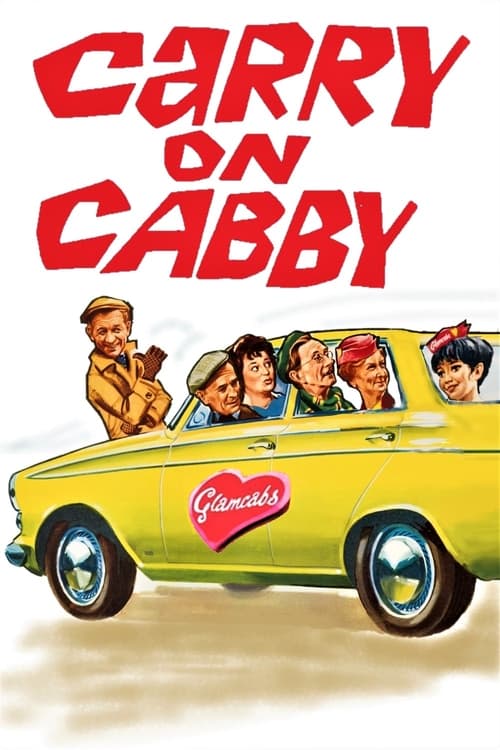An occupational hazard with watching these old movies is that sometimes the world has moved on so far that the very premise seems wrong. Of course, it was a very different world in 1963, what with the George Wallacing, the whites-only hotels, iconic MLK speeches, and a Presidential assassination. The Beatles released their first album and Sylvia Plath committed suicide, the two events presumably unrelated.

Peggy Hawkins is married, affluent, unsatisfied.
1963 also saw the publication of Betty Friedan’s The Feminine Mystique, an exploration of why modern women are so unhappy. She largely blames a culture that tells women they are supposed to find fulfillment in child-rearing and husband-wrangling. “We can no longer ignore that voice within women that says: ‘I want something more than my husband and my children and my home,’” she says at the close of the first chapter.
It is in this environment that Carry On Cabby was released. Charlie Hawkins (Sid James) is the owner of Speedee Taxis and deeply dedicated to the work. His wife Peggy (Hattie Jaques) wishes that he were a bit more devoted to her. When Charlie misses an anniversary celebration because work interferes, Peggy goes into business for herself with Glamcabs, an all-female taxi service with leggy drivers dressed like airline stewardesses. It’s a war between the sexes! Of course, by the end (spoiler alert) Peggy feels like she is betraying Charlie by running a more successful cab service.

Men interview for a job at Speedee Taxis by describing the fastest route between two stops, while…
Mystique was published in February, Carry On Cabby was released in June. I won’t do screenwriter Talbot Rothwell the injustice of speculating whether or not he’d read Mystique. But it’s pretty clear Cabby is working with the same source material — male anxiety over women entering the workforce and women’s discomfort with both sequestered home life and workplace self-actualization.
But while Friedan launched Second Wave feminism, Cabby is a much more conservative vehicle that I found unpleasant to watch. Much of the humor has to do with the women cabbies showing up the men through unfair competition: using short skirts to get fares, deploying feminine wiles to get male customers to service their vehicles (not a euphemism for once). Charlie screens employees by testing them on a city map; Peggy just asks to see their legs.

… women interview for a job at Glamcabs by showing off their legs.
The typical excuse to say is that the movie is “of its time” and it is very much that. But that doesn’t mean we should give it a pass. At the very least, the blatant sexism in the film gives us a good cultural touchstone for the kind of world Friedan was writing about. If we’re uncomfortable with it now, that’s a reasonable indication that we’ve come a fair distance. But I watched the film last week — the week in which a Trump tape was published showing the current Republican candidate for President bragging about sexual assault. So maybe some of my discomfort is in the idea that we haven’t come far enough.
Beyond that, though, the movie is simply boring. Hawtrey is underused, neither Kenneth Williams nor Joan Sims are present. Esma Cannon, who was so brilliant in Carry On Cruising, is once again in a straight role as Peggy’s co-conspirator. The movie’s climax is an extended chase scene that is primarily Sid James waving his hand at a map and crane shots of cars doing K-turns. Sexism aside, this one is simply hard to enjoy on its own terms.
I can think of only two reasons to watch this one. The first is that you’re doing something asinine like watching all the Carry On movies in chronological order. The other is that you’re looking for a unique angle on The Feminine Mystique.

Demonstrating how the movie is actually about ethics in cab maintenance, we see a customer changing the cabbie’s tire because she’s a girl and can’t risk her nails.

